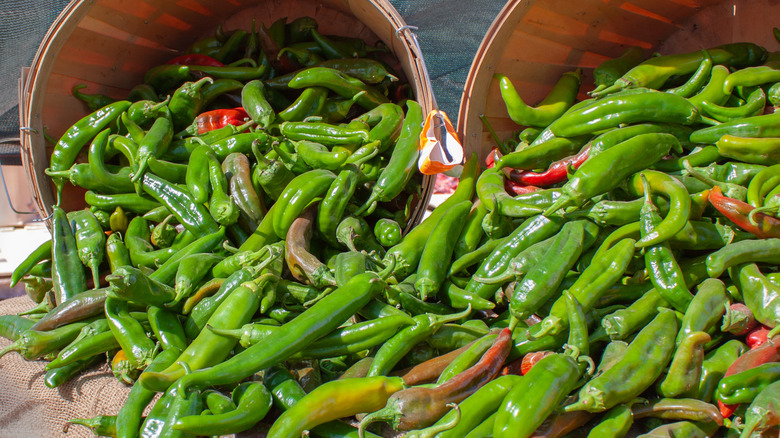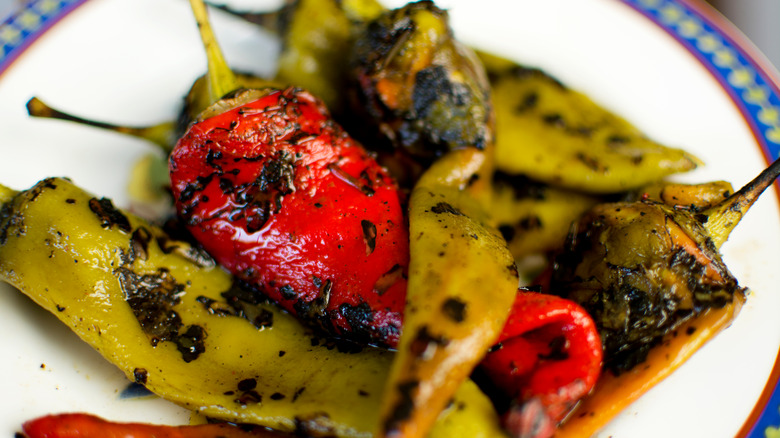How To Properly Freeze Green Chiles
Chiles have myriad culinary applications in cuisines from around the globe, but usually, a bit of their fiery spice goes a long way. If you find yourself drowning in fresh chiles from the garden or need only a small amount of canned green chiles for your recipe, freezing your extras in ice cube trays is a great solution. Small chiles like jalapeños, serranos, and Thai chiles or larger chiles like Hatch and Poblano can go in sliced or chopped and peeled or unpeeled. Just make sure to wash them and dry them completely before freezing.
After you have selected green chiles without soft spots, discoloration, mold, or wrinkly skin, slice or chop them, fill up your ice tray, wrap them tightly in plastic or aluminum foil, and freeze. Once frozen, pop them out and store them in a freezer-safe Ziploc bag, making sure to label and date them. If canned chiles are what you need to freeze, the process is the same, just without the extra step of slicing or chopping.
If you want to keep your green chiles whole, place them on a cookie sheet and cover them tightly. When frozen, place in a single layer into the Ziploc bag. Frozen chiles will last up to a year in the freezer.
How to use your frozen chiles in recipes
Frozen green chile cubes can be used in soups, stews, sauces, or stir-fries — they will be perfectly portioned as each cube is equivalent to about one ounce or two tablespoons. Use them directly from the freezer in recipes like this green chile mac & cheese, or thaw them whole to make chiles rellenos. To thaw them, put them in the fridge in a container or over a plate to avoid them dripping on the rest of your food. You can also pop them in the microwave to thaw as you would any other veggie. Just keep in mind that they will become watery as they thaw, so use them soon after thawing for best results.
A word of caution: As you prepare your green chiles for freezing, it's wise to wear food-grade gloves and avoid touching your face, eyes, mouth, or nose to prevent potential burns. The inner veins and seeds contain most of the capsaicin, the compound that makes them hot, which you can remove to lower the heat before freezing if you want.

